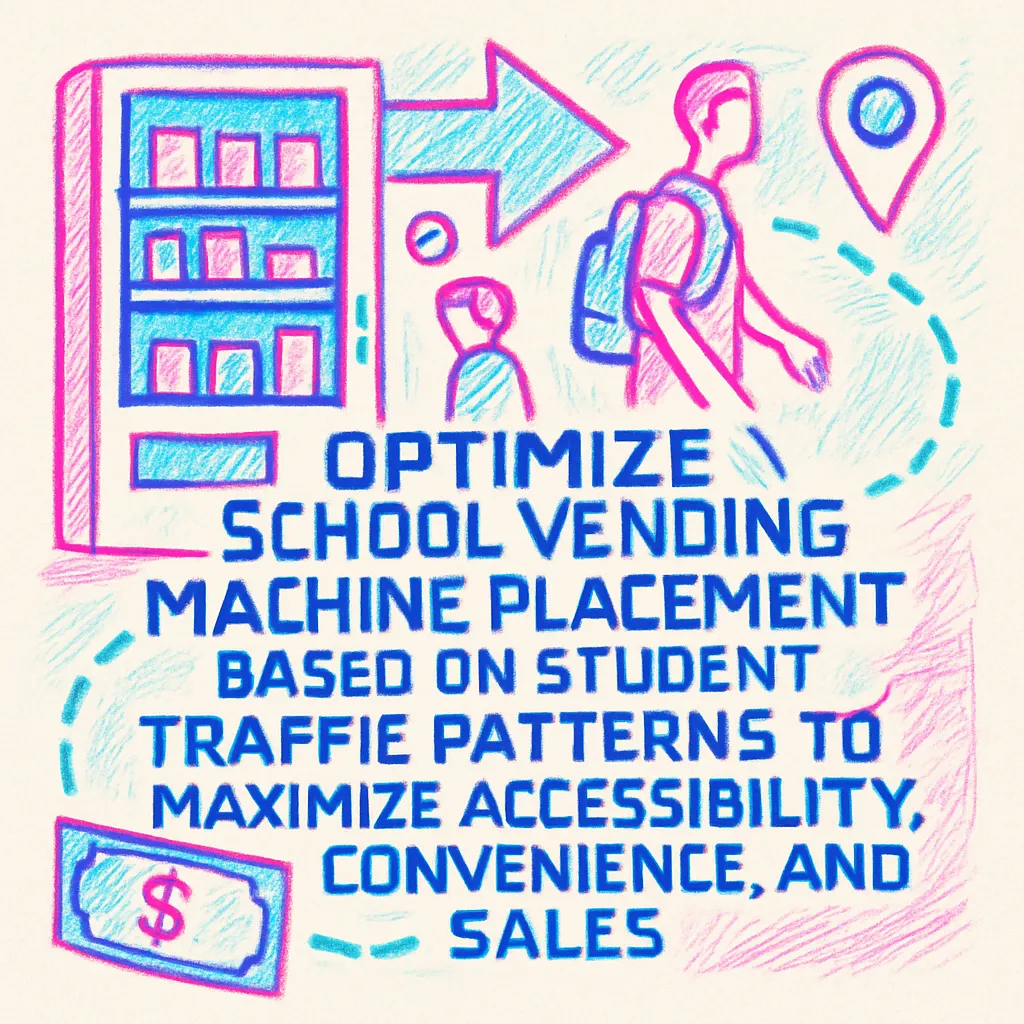Vending Machine Placement for Student Flow
Optimize school vending machine placement based on student traffic patterns to maximize accessibility, convenience, and sales.
Back to Vending for Schools ResourcesOptimize school vending machine placement based on student traffic patterns to maximize accessibility, convenience, and sales.
Back to Vending for Schools ResourcesStrategic placement of vending machines in schools is crucial for meeting student demand and integrating seamlessly into daily campus life. Understanding student flow patterns can transform a vending machine from a static fixture into a dynamic resource.
![]() Place machines in high-traffic student areas for maximum visibility
Place machines in high-traffic student areas for maximum visibility
![]() Align vending locations with breaks, lunch, and after-school activities
Align vending locations with breaks, lunch, and after-school activities
![]() Boost student satisfaction and sales with accessible, well-planned spots
Boost student satisfaction and sales with accessible, well-planned spots

In a bustling school environment, the effective placement of vending machines is paramount to their success. It's not just about having machines; it's about putting them where students are most likely to use them, aligning with the natural rhythm and traffic flow of the school day. This thoughtful approach ensures maximum convenience for students and optimal performance for the vending services.
Students move differently throughout the school day – from morning arrivals to class transitions, lunch breaks, and after-school activities. Identifying these key movement patterns is the first step in strategic placement. High-traffic corridors during passing periods, the perimeter of the cafeteria, or common areas like student lounges are often prime locations. For specific guidance on regulatory standards that might influence product availability in machines, schools can reference state-specific vending machine guidelines.
Beyond traffic flow, schools must prioritize accessibility and safety. Machines should be placed in well-lit areas, easily visible to staff, to deter misuse. Ensuring that vending machines are accessible to all students, including those with disabilities, is also a critical consideration. Exploring comprehensive resources like the School Administrator Guide to Vending can offer further insights into these important aspects.
The type of products offered in a vending machine can also influence its ideal location. For instance, machines stocked with energy drinks or protein bars might perform exceptionally well near athletic facilities. Conversely, healthier snack options might be highlighted in academic common areas. Making the distinction between available product categories is crucial for tailored vending solutions. Information on school-compliant vending options can help guide product selection and placement strategies.
Strategic placement maximizes student visibility and accessibility, leading to increased usage and satisfaction, and aligns with school traffic patterns.
Consider high-traffic areas like hallways during passing periods, near common areas, and where students gather during breaks or after school.
Ideal spots include cafeterias, main hallways, student lounges, near gymnasiums, and outside libraries or media centers during appropriate hours.
Analyzing student traffic patterns, surveying student preferences, and observing congregation points can help identify the best locations.
Generally, no, to avoid distractions during class time. Placement should be in common areas that don't disrupt instructional environments.
Prominent placement of healthy options in easily accessible areas can increase their visibility and encourage healthier choices among students.
Peak usage typically occurs during lunch breaks, before and after school, and between classes when students are moving through hallways.
Yes, beverage-only machines might do well near sports facilities, while combo machines might be better suited for general student lounges.
Placing machines in well-lit, supervised areas reduces the risk of tampering or misuse, and considering durable machines built for school environments helps.
Ensuring machines are easily reached by all students, including those with disabilities, is crucial, aligning with ADA guidelines for public access.